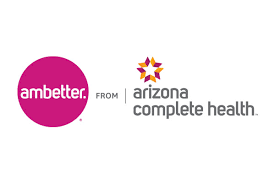 Ambetter from Arizona Complete Health is a health insurance provider that offers affordable health insurance plans in Arizona on the state Health Insurance Marketplace. (ObamaCare)As an insurance agent, it is important to understand the different plan options available to your clients. Ambetter offers Bronze, Silver, and Gold plans with different coverage, benefit options, and premium levels.
Ambetter from Arizona Complete Health is a health insurance provider that offers affordable health insurance plans in Arizona on the state Health Insurance Marketplace. (ObamaCare)As an insurance agent, it is important to understand the different plan options available to your clients. Ambetter offers Bronze, Silver, and Gold plans with different coverage, benefit options, and premium levels.
Bronze plans typically have lower monthly premium payments but potentially higher out-of-pocket costs. In contrast, Silver plans to provide a balance between monthly premium payments and out-of-pocket costs and is the only plan with additional out-of-pocket payment reductions. Gold plans have higher monthly premiums but lower out-of-pocket costs.
One of the benefits of Ambetter from Arizona Complete Health is the tax credit that clients can receive. Clients can get the tax credit they deserve, which can help lower their monthly premium payments. Additionally, Ambetter offers a My Health Pays® Rewards Program, where clients can earn rewards for taking charge of their health and optional dental and vision coverage.
Ambetter from Arizona Complete Health offers Bronze, Silver, and Gold plans, each with different coverage and benefit options and premium levels. Bronze plans typically have lower monthly premium payments but potentially higher out-of-pocket costs.
In contrast, Silver plans to provide a balance between monthly premium payments and out-of-pocket costs and is the only plan with additional out-of-pocket payment reductions. Gold plans have higher monthly premiums but lower out-of-pocket costs.
Average health insurance cost per month In AZ
The cost of health insurance in Arizona varies significantly based on the cost of care and the population insured. In 2024, Arizona’s most affordable Bronze plan cost $326 monthly, while the most affordable Silver plan cost $405.
It is important to note that the cost of health insurance will depend on the specific plan, and financial assistance is available for those who qualify.
Each metal level provides a balance on monthly premium payments, out-of-pocket expenses, and access to Ambetter Health’s in-network providers. Ambetter also offers Select plans, which offer a lower monthly premium cost and the benefit of seeing doctors from the Banner & Honor Health System. These plan options are only offered within certain areas of Arizona. Ambetter Select Plans are available in Bronze, Gold, and Silver plan metal levels and are offered in Maricopa, Pima, and Pinal counties.
Provider and Billing Manual
– AZ – Provider and Billing Manual 2023 – Ambetter from Arizona Complete Health.
– Important Steps to Successful Submission of Paper Claims.
Telehealth Services
– Ambetter from Arizona Complete Health’s Telehealth Services offers a convenient way to access in-network Ambetter providers 24 hours a day.
Member Resources
– My Health Pays® Rewards Program: Earn rewards for taking charge of your health.
– Start Smart for Your Baby®: Take care of you and your baby with our maternity health programs.
– Your Better Health Center: Find health tips, financial advice, and more to build a healthier life.
– Health Management Programs: Get personalized help managing diabetes, asthma, and other chronic conditions.
– Ambetter Support: Find answers to common questions, learn more about the basics of health insurance, and contact the Ambetter help center.
– Transparency Notice: As a member of Ambetter from Arizona Complete Health, non-network providers should not bill you for covered services for any amount greater than your applicable.
Deductible and out-of-pocket costs
Deductibles and out-of-pocket costs are important factors when choosing a health insurance plan. Ambetter from Arizona Complete Health offers Bronze, Silver, and Gold plans, each with different coverage and benefit options and premium levels. Bronze plans have lower monthly premium payments but potentially higher out-of-pocket costs. In contrast, Silver plans provide a balance between monthly premium payments and out-of-pocket costs and are the only plans with additional out-of-pocket payment reductions.
Gold plans have higher monthly premiums but lower out-of-pocket costs. The specific deductible amounts for each plan can vary depending on the plan, and it is important to note that the information provided represents how typical plans at each level work, and how much a client will pay will depend on their specific plan. Ambetter also offers Select plans, which offer a lower monthly premium cost and the benefit of seeing doctors from the Banner & Honor Health System.
These plan options are only offered within certain areas of Arizona. The out-of-pocket maximum is the most a client could pay in a year for covered services, and it can vary depending on the plan. Cost-sharing reductions are available for Silver plans, which can lower out-of-pocket costs such as copays, deductibles, and coinsurance. To calculate out-of-pocket costs, clients can use the Ambetter Health enrollment site to find a plan and estimate their costs.
Benefits of choosing an independent health insurance Agents/brokers and assisters who are trained and certified by the Marketplace to provide application help.
Independent health insurance agents/brokers and assisters trained and certified by the Marketplace to provide application help offer several benefits. Independent agents offer multiple insurance carriers and earn a commission from insurance companies for their products. They are not insurance carrier employees and represent the applicant, not the insurance company. Because they provide more products from more companies, clients have more options and can easily find the best plan for them.
Brokers are independent insurance agents who offer multiple insurance carriers’ products and are paid by commissions. They are not employees of the insurance carrier but represent their clients. They often employ insurance agents who help increase their business. Brokers typically offer other types of insurance, such as auto, home, or life insurance. This can be an added benefit. Certified application counselor designated organizations (CDOs) are vital to the assister community.
In the Federally-facilitated Marketplaces (FFMs), CDOs oversee certified application counselors (CACs) who are trained and able to help consumers seeking health insurance coverage options through an FFM. Through ongoing training and resources, Enrollment Assistance Personnel (EAPs) are prepared to help consumers who lose Medicaid coverage to facilitate a seamless transition to Marketplace coverage. EAPs’ efforts are coordinated with other assisters in the community to help consumers understand basic concepts and rights related to health coverage, provide enrollment assistance, and work with individuals to link coverage to care.
Independent agents/brokers and assisters can help clients understand terminology, compare available plans, and complete enrollment. However, only agents and brokers can make policy recommendations, as the state licenses them in addition to being certified by the exchange. It does not cost clients anything to use a broker, and most brokers certified by the exchange are also able to help compare ACA-compliant off-exchange plans with the options available through the exchange.
FAQs: Ambetter from Arizona Complete Health
Blake Insurance Group
Phone: (888) 387-3687
Email: info@blakeinsurancegroup.com
Hours: Mon-Fri 9:00 am to 5:00 pm
Sat-Sun: Closed

Blake Nwosu
Owner & Principal Agent
Expertise: All personal and commercial line insurance, including auto, home, business, health, and life insurance.
License: 16117464

